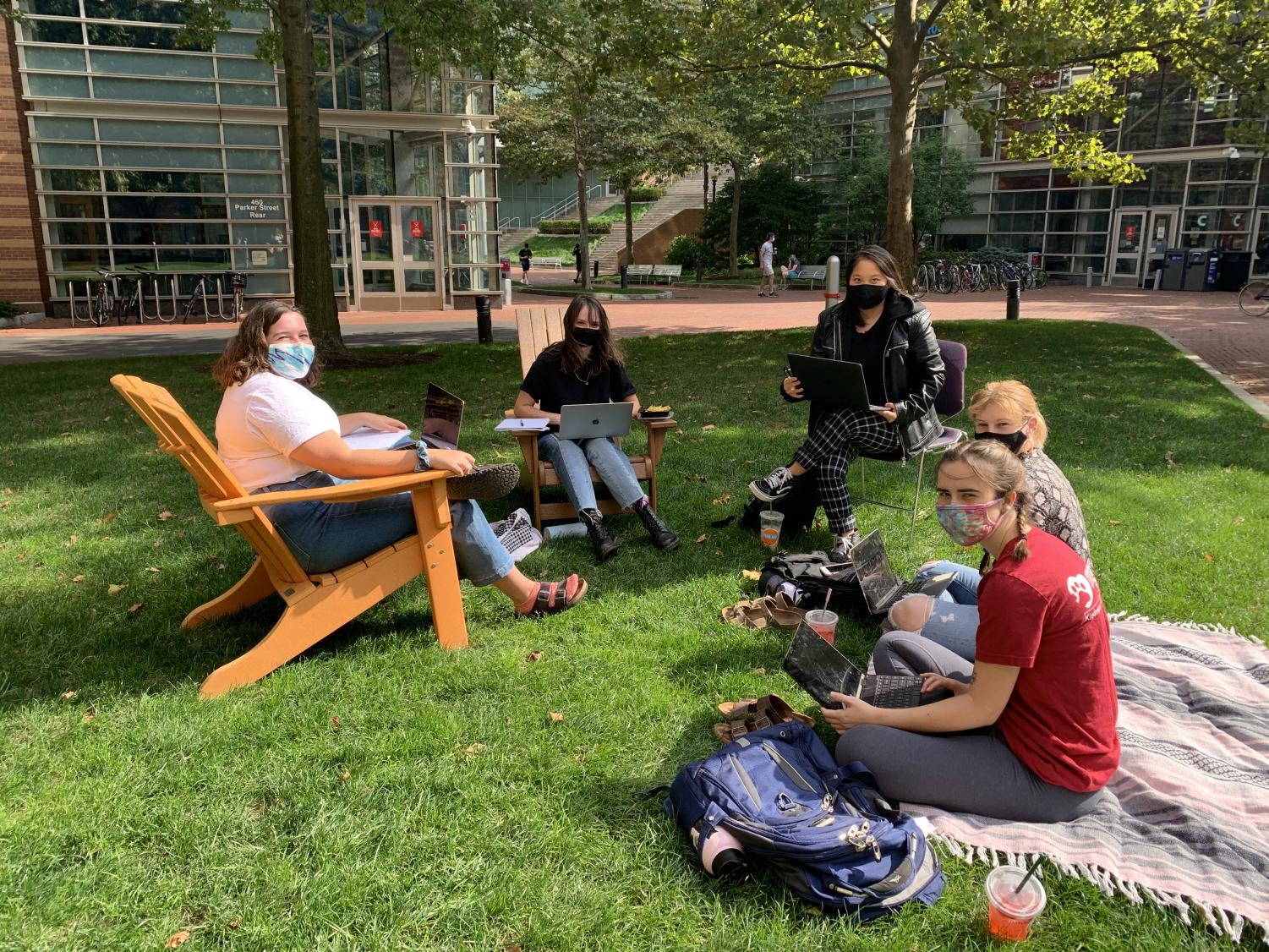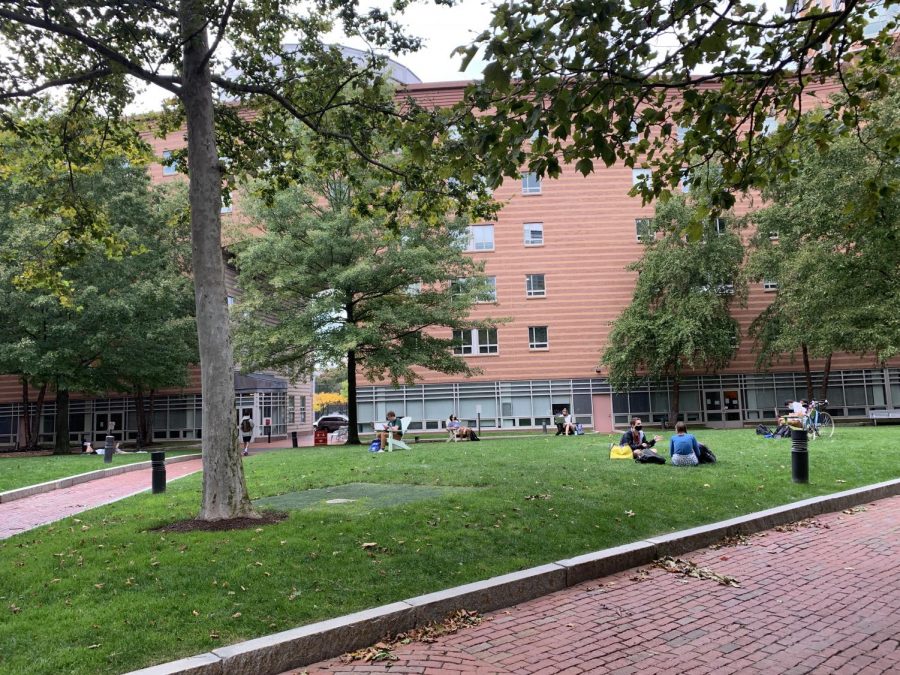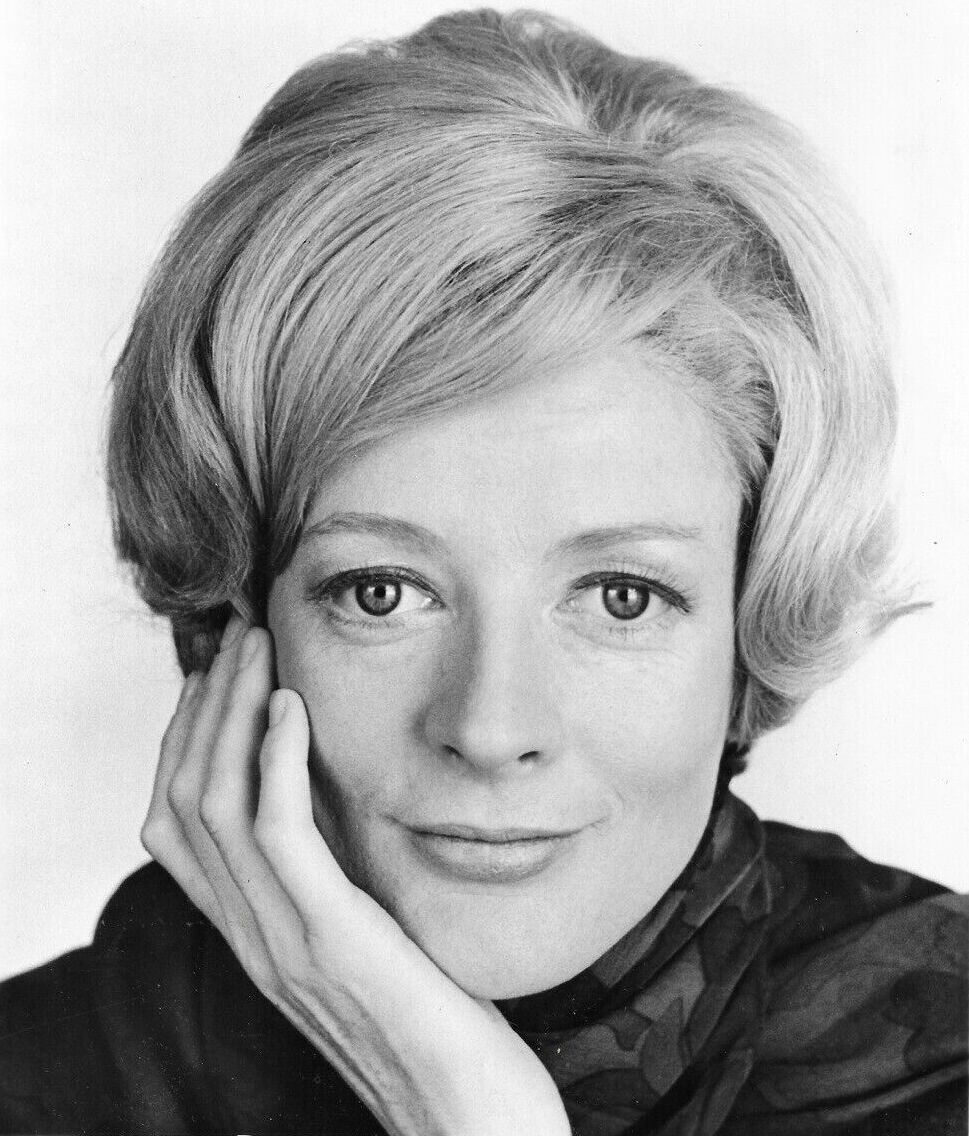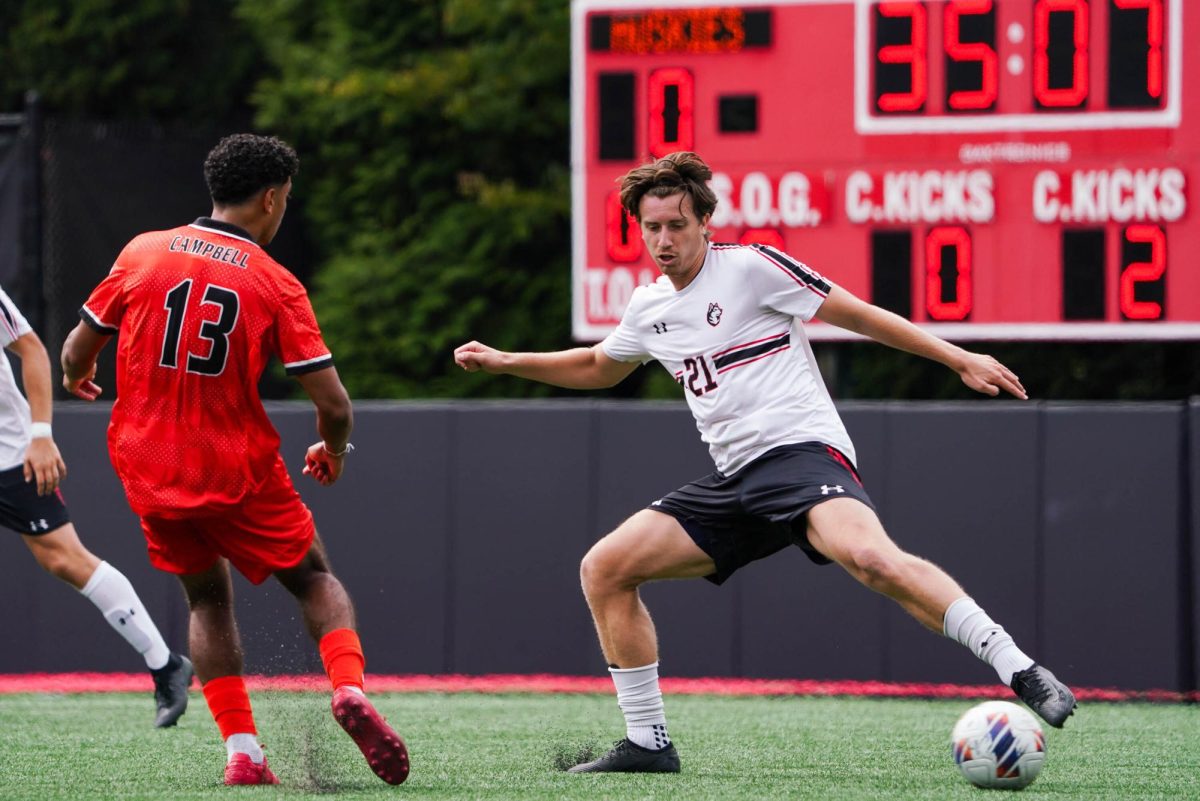Students stage sit-in to protest tent construction in West Village Quad
The West Village Quad, where construction of an outdoor tent is planned.
October 2, 2020
Thursday, Northeastern’s West Village Quad was filled with students relaxing in hammocks, doing homework on blankets and sitting in Adirondack chairs. The sight was no different than any other warm, sunny day, except the students in the quad had a purpose: to save the green space from being graveled over to make way for a large outdoor tent.
Students staged a sit-in Thursday in West Village Quad to protest the planned construction of a new tent. West Village Quad would be the fifth outdoor space to be replaced with large tents, joining Robinson Quad, Speare Diamond, the green spaces outside West Village F and Cabot Testing Center and the volleyball court behind Willis Hall. All of the tents, except for the one outside Cabot, are intended for outdoor dining.
Jessica Nemeth, a second-year chemical engineering major, spearheaded the sit-in after seeing surveyors making plans for tent construction from her West Village C window on Wednesday.
“I came down and spoke to the surveyors, and one of them told me it was almost definite that they were going to put the tent here,” Nemeth said. “He told me, ‘If you and others living around here don’t want this here, then you have the ability to speak up and they’ll listen.’”
Nemeth utilized her connections in Sunrise Northeastern, the Husky Environmental Action Team and the Student Government Association, or SGA, to spread the word via social media.
“Seeing the [tent construction] all around campus and thinking it might happen to a space that so many people use was super upsetting,” said Sebastian Chávez, the SGA vice president of student services and a second-year computer engineering and political science major.
Nemeth said the form they publicized for the sit-in received 145 responses in 20 hours and that they’ve seen many student organizations promote the sit-in.
“Everyone really values this space as a place to come together now that we can’t see each other in the residence halls,” Nemeth said. “It’s hard to connect with others that don’t live near you.”
In an Oct. 2 email to The News, Northeastern spokesperson Mike Woeste emphasized that the tents are temporary.
“[The tents] have been installed in anticipation of the cold weather. These are not permanent structures and the sites will be returned to their original condition when the tents come down,” Woeste wrote. “We value the green space on campus and have gone to great efforts to promote the green space on campus with our Arboretum efforts and are committed to that cause.”
Madison McDermott, a second-year student in the Explore Program, said she’s saddened by the idea of losing West Village Quad because it would mean less space to spend time with friends.

“I can’t hang out with friends inside my dorm, I can’t hang out with friends outside my dorm,” McDermott said. “Where am I supposed to hang out then?”
Around 2 p.m. Thursday, Northeastern President Joseph E. Aoun came to the quad to talk to students there. Leila Abdul-Malak, a second-year health sciences and psychology major who participated in the sit-in, said Aoun told her that students are asking for more tents, but she’s doubtful that’s true based on how many students have advocated for saving West Quad.
“He kind of deflected and made it seem like people are asking for a place to hang out, which doesn’t make sense because we’re all already hanging out,” Abdul-Malak said.
Anika Padin, a second-year applied physics major, said she wasn’t happy with the tents to begin with and especially doesn’t see the point of having them in the West Village area, where upperclassmen have kitchens in their on-campus apartments.
Amy Aris, a fifth-year English major, said that while she agrees that West Village Quad isn’t the best location for a new tent, she sees the merit in the tents.
“As it starts to get colder, it’s going to get a lot harder for students to interact and the tents will provide a space for students to actually connect and spend time with each other as there’s really no other space on campus to do that,” Aris said. “While the loss of green space isn’t ideal, ultimately I think it’s a good option for once the temperature drops and students won’t be spending much time outside on the quads anyway.”
Jai Sandhu, a second-year psychology major, said he thinks a lot of students are ignoring the value of the tents and that this is not as big of an issue as some are making it out to be.
“I think a large part of Northeastern culture is to act out against everything,” Sandhu said. “I’m not someone who supports every decision Northeastern makes, but I feel like we should be more open and more understanding of certain decisions being made.”
Kate Parks, a fourth-year marine biology major, said they’ve found it disheartening to see the green spaces dwindling.
“It seems like there are more tents than there are students who are gonna use the tents,” Parks said. “I don’t think we need even more.”
Parks and other students voiced concerns about social distancing and virus precautions in the tents.

“There’s basically no monitoring of the tents. Tables keep getting pushed together with crowds of 15 people that I keep seeing,” said Jake Peterson, a fourth-year industrial engineering major. “Masks are always down … I personally don’t feel as safe going into these tents to be around other people because it isn’t as safe as they make it out to be.”
The tents have strict capacity markers and a limited number of chairs but no apparent monitoring or enforcement of the rules, multiple students have noted.
Chávez said that while this particular sit-in is about West Village Quad, the disconnect between students and the university runs deeper.
“Students are the biggest stakeholders on campus. They’re the ones who feel the most impact of whatever decisions the administration makes. Students need to be consulted on a bigger level,” he said. “… An open line of communication between students and the administration is something we’ve been needing for a long time.”







